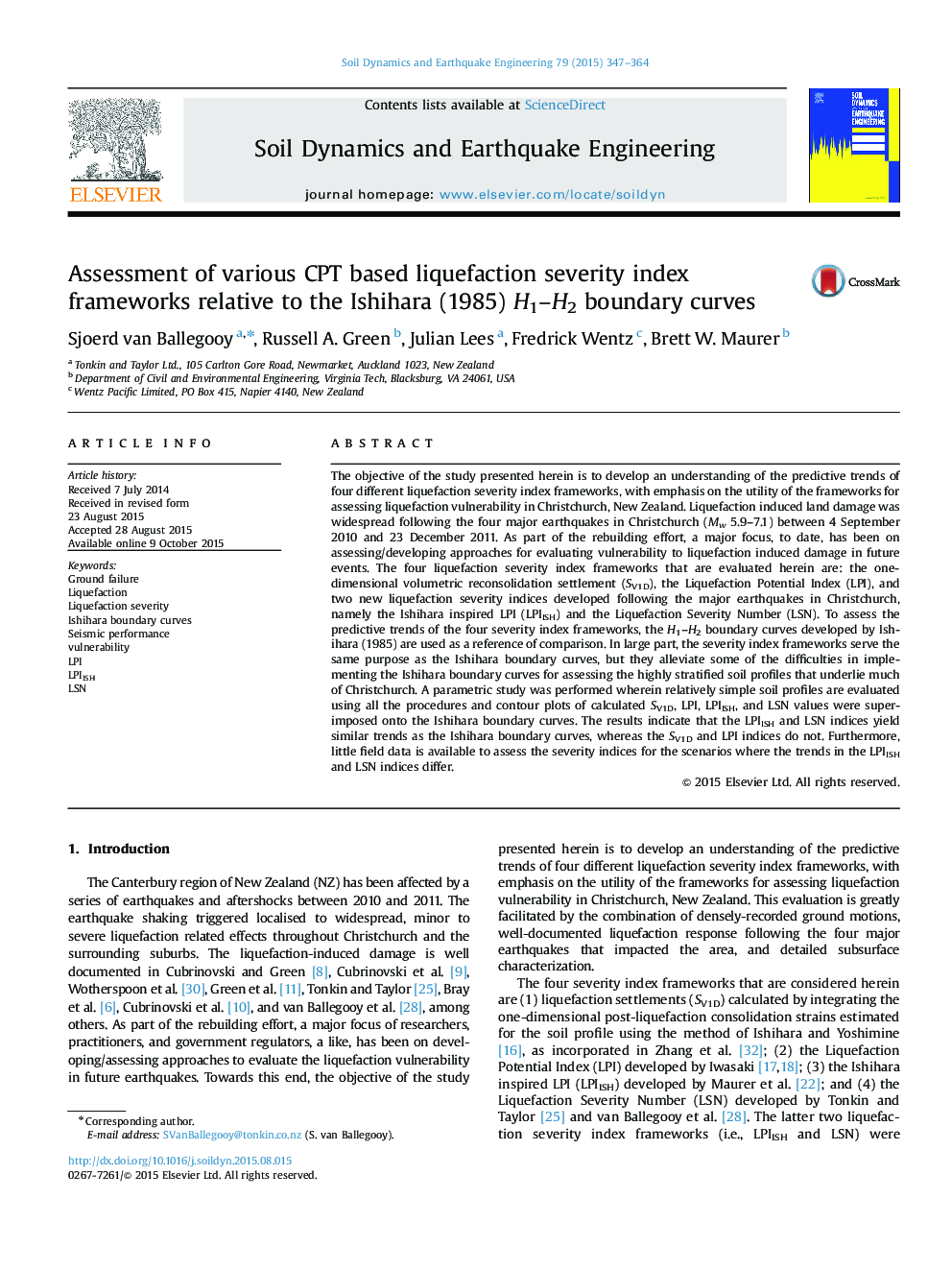| کد مقاله | کد نشریه | سال انتشار | مقاله انگلیسی | نسخه تمام متن |
|---|---|---|---|---|
| 303983 | 512767 | 2015 | 18 صفحه PDF | دانلود رایگان |

• Evaluation of S1VD, LPI, LPIISH, and LSN liquefaction vulnerability index parameters.
• Comparison of the SV1D, LPI, LPIISH, and LSN index parameters with the Ishihara (1985) boundary curves.
• LPIISH and LSN index threshold values that indicate the likely occurrence/severity of surficial liquefaction manifestation.
• Parameters that might need to shift the Ishihara (1985) boundary curves to the right or the left.
The objective of the study presented herein is to develop an understanding of the predictive trends of four different liquefaction severity index frameworks, with emphasis on the utility of the frameworks for assessing liquefaction vulnerability in Christchurch, New Zealand. Liquefaction induced land damage was widespread following the four major earthquakes in Christchurch (Mw 5.9–7.1) between 4 September 2010 and 23 December 2011. As part of the rebuilding effort, a major focus, to date, has been on assessing/developing approaches for evaluating vulnerability to liquefaction induced damage in future events. The four liquefaction severity index frameworks that are evaluated herein are: the one-dimensional volumetric reconsolidation settlement (SV1D), the Liquefaction Potential Index (LPI), and two new liquefaction severity indices developed following the major earthquakes in Christchurch, namely the Ishihara inspired LPI (LPIISH) and the Liquefaction Severity Number (LSN). To assess the predictive trends of the four severity index frameworks, the H1–H2 boundary curves developed by Ishihara (1985) are used as a reference of comparison. In large part, the severity index frameworks serve the same purpose as the Ishihara boundary curves, but they alleviate some of the difficulties in implementing the Ishihara boundary curves for assessing the highly stratified soil profiles that underlie much of Christchurch. A parametric study was performed wherein relatively simple soil profiles are evaluated using all the procedures and contour plots of calculated SV1D, LPI, LPIISH, and LSN values were superimposed onto the Ishihara boundary curves. The results indicate that the LPIISH and LSN indices yield similar trends as the Ishihara boundary curves, whereas the SV1D and LPI indices do not. Furthermore, little field data is available to assess the severity indices for the scenarios where the trends in the LPIISH and LSN indices differ.
Journal: Soil Dynamics and Earthquake Engineering - Volume 79, Part B, December 2015, Pages 347–364